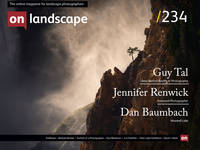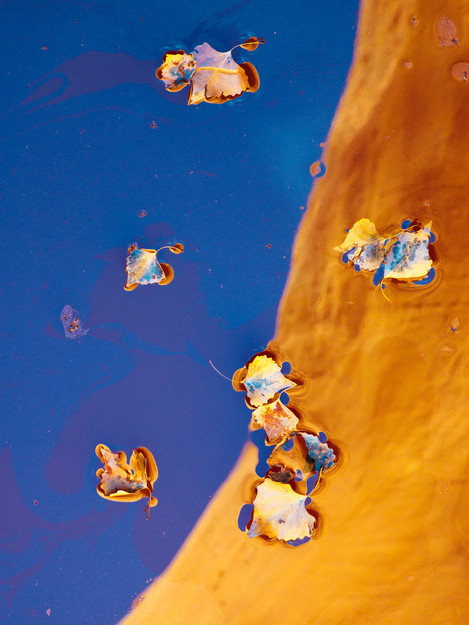Part I

Guy Tal
Professional photographic artist, author and speaker working primarily in the Western US.

Tim Parkin
Amateur Photographer who plays with big cameras and film when in between digital photographs.
"Is photography truth?" is the opening question. Before you shout out like we're a pair of pantomime dames goading the audience, yes we know it isn't but it's as good a place to start as any. Despite the ever-louder cries of "fake news" at every barely processed photograph, the ideas around photography and truth are far from new. I wanted to chat about some of the thoughts I had had whilst thinking about the Natural Photography Awards competition and the way that we have considered photography since its invention in the Victorian era and who better to grapple with some of these ideas than Guy Tal. I hope you'll forgive us for the length of the article, we seem to get a little carried away at times, but I think most of the discussion of interest and to help in your consumption, I've split it into two parts; the second part to follow in the next issue.
The History of Straight Photography
Tim Parkin (TP): Is photography truth? Let’s start off with the very basics of the origins of photography. Was it considered truth at the start?
Guy Tal (GT): I think it was considered truth at the start because truth was the goal. At the time, realism—especially realism in appearances of natural scenes—was considered the highest aesthetic goal for artists to aspire to. But really the process of using optics and mechanics to reproduce natural appearances wasn’t new. What was new at the time photography was invented, was a way to fix those appearances so you could have something tangible that you could hand off to someone—something that would last.
Before photography, many painters had used Camera Obscura technology to reproduce realistic appearances. That was, and probably still is the goal for the technology of photography. But artists often find ways to use media, materials, and technologies in novel ways, and not just in the ways the inventors of these technologies had intended originally.
TP: Art historians are fairly certain that artists used Camera Obscura techniques to produce reference projections and possibly even some of the origins of perspectives in the renaissance may have come from photographic terms.
GT: Yes certainly. We like to think about former artists as people who could draw mimetically but really there’s a very distinctive evolution in how artists rendered appearances. For a long time, they didn’t know how to create shading, the illusion of three-dimensional depth, and things of that nature.
TP: So the ideas of truth and representation at the dawn of photography were quite interesting as it could be said that photography helped art in many ways to escape from its commitment to a truth.
GT: I don’t know if it helped art escape as much as it scared art away from these things because painters realised that soon photographic technology will be able to do what they did, and likely do so much better. That prompted them to start looking into other things that were more abstract, more subjective, more expressive, rather than reproduction of appearances.
Quality in art used to be measured by an artist’s manual technical skills—how well you could render something. How well you could reproduce qualities of light and perspective, shading and depth. In the beginning, photography couldn’t do that. It certainly wasn’t able to reproduce colours. But the writing was on the wall. Critics and painters believed that for art to continue to matter, to be important, it had to separate itself from realism, and that caused an amazing shift in the arts, starting with impressionism, which was a rebellion against realism.
TP: And yet impressionists stole from photography in many ways as well (as well as East Asian art).
GT: All art movements steal from each other. This is the whole reason why the idea of “photographic celibacy” doesn’t make sense to me in terms of artistic expression because art evolves relative to what came before it and what is contemporary to it. If you look at any major advancement in art, it always builds on something that happened before it, or repudiates something that happened before it, or departs from what’s popular. All art movements are relative to what happened before them. If you’re just starting from a standpoint of not relating your art to other art or treat it as just something you do for enjoyment, that’s fine, but in that case, it’s unlikely your work will contribute anything to the evolution of art.
The invention of photography gave a huge rattle to the art world because it essentially offered a way of reproducing appearances without any artistic training. For a while the realistic aesthetic still dominated. The first impressionists were excluded from salons and competitions of their time because their work was not realistic. But finally, the art world came to accept that the highest purpose of art is to express ideas and to create impressions, not to reproduce appearances. Up to that point, all these factors were bundled up together in realistic paintings. Photography separated them and forced artists to prioritise expression over realistic renditions.


